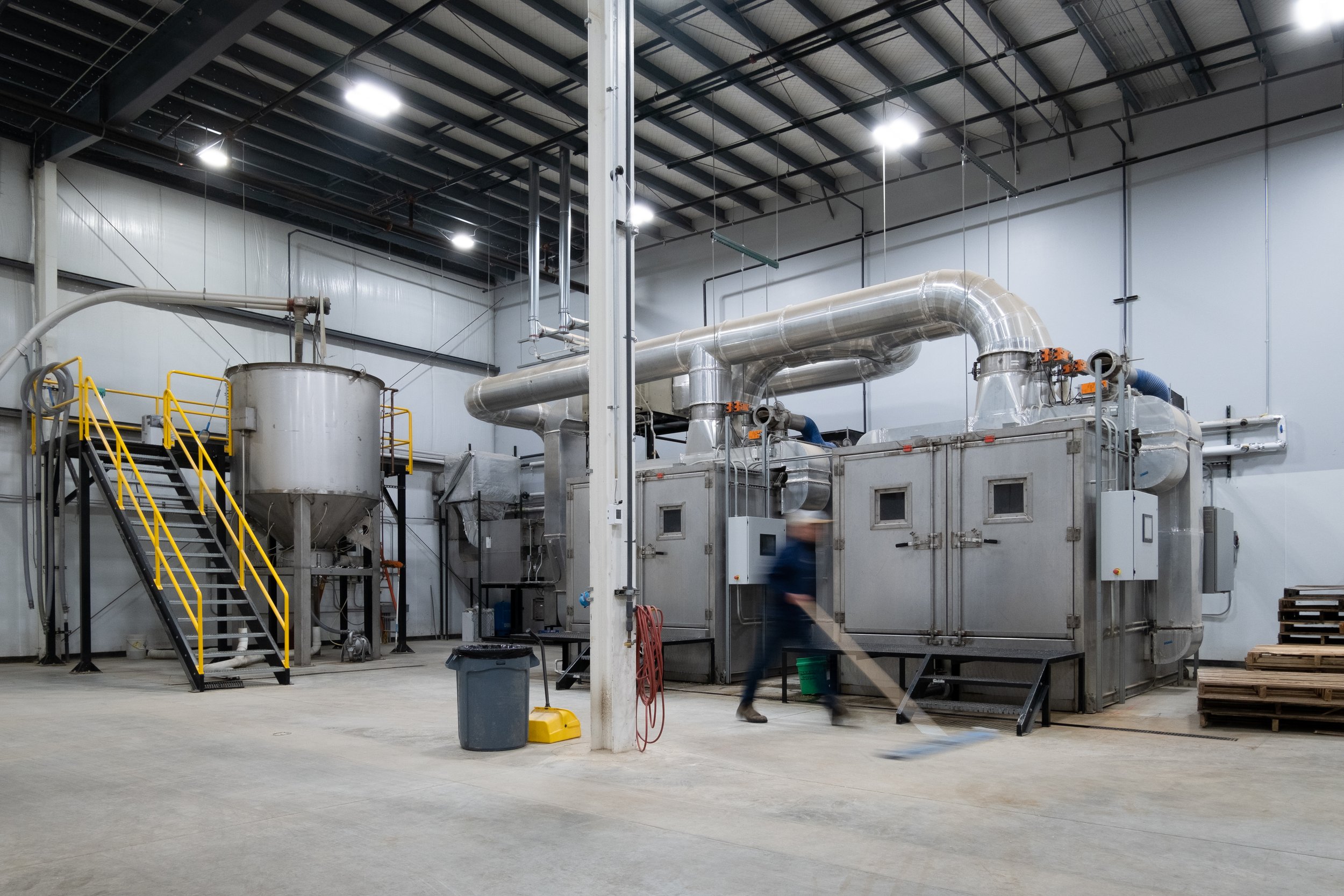Even our equipment is Michigan-made.
We renovated a formerly vacant warehouse and turned it into Traverse City’s first malt house. Our state-of-the-art processing equipment was manufactured right here in Michigan.
It was designed with energy efficiency and sustainability at the forefront. Through the use of heat exchangers, variable frequency drives, and other energy recovery methods, we are able to control and reduce our energy consumption.
We have recently completed an expansion project which will allow us to process up to 2,500,000 pounds of grain each year.
Our skilled production team has a keen sense of taste and attention to detail, allowing them to have the utmost focus on the quality of our grains. Additionally, we are proud to collaborate with Michigan State University and Hartwick College in New York on our lab analysis and advancements within the craft malt industry.
Each batch of malt is evaluated by 3rd party labs using American Society for Brewing Chemist (ASBC) approved grain and malt analysis methods.
The Malting Process
Malting is a four stage process that includes harvest, steeping, germinating and kilning grain. This process is necessary before grain can be used in the brewing process.
Grain Selection and Harvest
Steep
Germination
Kilning
Step 1
Grain Selection and Harvest
Our barley variety selection is based on annual recommendations from American Malting Barley Association and in consultation with MSU Extension Malting Barley research group
We are continuously evaluating barley varieties that achieve the best yield for our growers without compromising on quality requirements of our brewing and distilling customers
We currently source and process 2-row spring (Odyssey) and winter (Violetta and Calypso) varieties
In addition to barley, we also malt wheat, rye, oats, spelt, and many other cereal grains
For up-to-date information on barley and small grains research in Michigan, please visit: http://msue.anr.msu.edu/topic/info/malting_barley
Step 2
Steep
Grain and water are mixed together in a steep tank to begin the malting process
Objective of steeping is to clean the barley and increase grain moisture for germination
Step 3
Germination
Once steeping is completed, barley is allowed to germinate in a climate-controlled environment
Moist, cooled air is circulated through the grain bed to maintain moisture and temperature
The goal of germination is to unlock starch reserves and produce enzymes that are necessary for the brewing and distilling process
Step 4
Kilning
Once the desired level of modification has been achieved, the grain must be dried to be packaged and stored
During the kilning phase, different types of malt can be produced based on temperature, moisture content and time duration.
This process directly impacts the color and flavor of the finished malt
Our malts
We offer an assortment of grains for your brewing and distilling needs. From our base malts to our speciality malts, our fresh and flavorful, local grains will blend perfectly into your next recipe.














